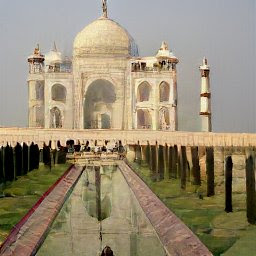Mount Kailash facts
Mount Kailash is located in the Himalayas, Tibet.
It is considered a sacred mountain in four religions: Hinduism, Buddhism, Jainism, and Bön.
It is the source of the Indus, Brahmaputra, Sutlej, and Karnali rivers.
It is 6,638 meters (21,778 ft) high.
No one has ever successfully climbed to the summit.
Pilgrimage to the mountain is an important spiritual practice for followers of the four religions.
The mountain is surrounded by Lake Manasarovar and Lake Rakshastal.
The shape of the mountain is considered pyramid-like.
The mountain is depicted in Hindu mythology as the abode of Lord Shiva.
The mountain is part of the Trans-Himalaya range and is made of granite.
It is believed that a complete circumambulation of Kailash on foot can bring spiritual liberation.
The mountain is considered a geographic and spiritual pole of the Earth.
The government of China has restricted access to the mountain for foreigners.
The mountain is a UNESCO World Heritage Site, as part of the sacred landscapes of the Trans-Himalaya.
Local people believe that the mountain is inhabited by demigods and spirits.
The exact origin of the name "Kailash" is unknown.
The first recorded attempt to reach the summit was made in the 7th century by a Chinese monk.
The mountain has a distinctive shape, with four nearly symmetrical faces.
The surrounding landscape is considered a habitat for several endangered species, including the snow leopard.
There have been several cultural and spiritual events, such as the Kailash Manasarovar Yatra, held near the mountain.
Mount Kailash, located in the Himalayas of Tibet, is a sacred mountain to four major religions - Hinduism, Buddhism, Jainism, and Bön. Standing tall at 6,638 meters (21,778 ft), the mountain is considered a source of spiritual power and is revered by millions of people around the world. It is said to be the abode of Lord Shiva, one of the most important deities in Hinduism, and is also considered a place of pilgrimage for those seeking spiritual liberation.
Mount Kailash is unique in its shape and geography, with four symmetrical faces that make it resemble a pyramid. It is surrounded by two important lakes, Lake Manasarovar and Lake Rakshastal, which are considered sacred and are visited by pilgrims seeking spiritual purification. The mountain is also the source of four of the most important rivers in Asia - the Indus, Brahmaputra, Sutlej, and Karnali.
Despite its importance and significance, Mount Kailash has never been successfully climbed to its summit. This is partly due to the harsh and unforgiving terrain, as well as the spiritual significance of the mountain. Many believe that climbing the mountain would be disrespectful to the religious beliefs and practices associated with it.
For followers of Hinduism, Buddhism, Jainism, and Bön, making a pilgrimage to Mount Kailash is a significant and spiritual practice. This involves a complete circumambulation of the mountain on foot, which can take several days or even weeks to complete. This pilgrimage is said to bring spiritual liberation and is considered a once-in-a-lifetime opportunity for many believers.
The mountain is depicted in Hindu mythology as the abode of Lord Shiva, who is believed to reside there with his consort Parvati. According to Hindu legend, Lord Shiva sits in meditation at the summit of Mount Kailash, and the circumambulation of the mountain is a representation of the cycle of birth, death, and rebirth. For Buddhists, the mountain is considered the site of the heaven of Demchok, and is revered as a symbol of compassion and wisdom.
For Jains, Mount Kailash is considered the birthplace of their first prophet, Rishabhadev, and is seen as a symbol of liberation and spiritual awakening. In Bön, the mountain is considered the abode of the sky deity, Sipe Gyalmo, and is revered as a symbol of the sacred landscape.
The local people of Tibet have a rich cultural and spiritual connection to Mount Kailash. They believe that the mountain is inhabited by demigods and spirits, and that circumambulating the mountain is a way to connect with the spiritual realm. They also believe that the surrounding landscape is a habitat for endangered species such as the snow leopard, and that these species are protected by the spiritual power of the mountain.
The Chinese government has restricted access to Mount Kailash for foreigners, and only allows limited access for religious pilgrims. Despite this, the mountain is still considered a major tourist destination for those seeking a spiritual experience. The government has also designated the mountain and its surrounding landscapes as a UNESCO World Heritage Site, as part of the sacred landscapes of the Trans-Himalaya.
In conclusion, Mount Kailash is a unique and special place that is revered by millions of people around the world. It represents a spiritual and cultural connection to the divine and is considered a symbol of spiritual liberation and enlightenment. Despite the challenges and difficulties associated with making a pilgrimage to the mountain, it remains an important and inspiring destination for those seeking a deeper connection with the spiritual realm.

Comments
Post a Comment